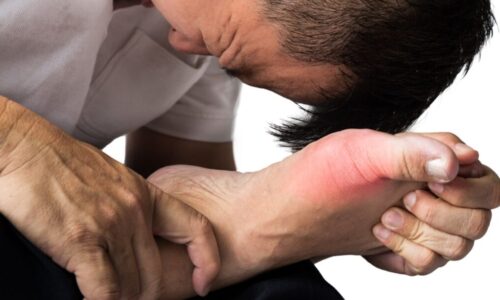Types of Hernias with Dr. Anthony Gonzalez |
There are different types of hernias. Some of them are inguinal hernia, femoral hernia, umbilical hernia, and incisional hernia. Dr. Anthony Gonzalez, Medical Director of Bariatric Surgery at South Miami Hospital, says inguinal hernia is the most common type of hernia and it is located in the groin.
He also explains femoral hernia is more common in women, and the umbilical hernia is more common in kids.
Transcript
Right so we do have a list of different kinds of hernia that we’re gonna be discussing today so let’s take them doctor and discuss them one by one let’s take the first one so inguinal hernia is the most common type of hernia that exists that’s our hernia that’s in the groin in the inguinal location a little bit below that is the femoral hernia which is just below that femoral hernia is more common in women though women will have more england hernias umbilical hernias will be called a bellybutton hernia a little belly button hernias umbilical hernia more common in kids and a baby can be born with an umbilical hernia and then incisional hernia and incisional hernia is anywhere you’ve had an incision so the moment that you have any surgery you’ve had an appendix you’ve had a gallbladder surgery you’ve had aster ectomy in that area where the surgeon made the incision opened your abdomen and closed you there’s at least a 20% chance that you can develop a hernia in that location and that is called an incisional hernia we have an image of an umbilical hernia which you said can happen in kids or in babies for that matter I was surprised to hear that let’s take a look at that picture and oh so it’s bulging out correct so you know a lot of a lot of parents will think of it as a deformed belly button it’s an Audi versus in any case an Audi well then you may have a hernia really well yeah but it’s just a couch okay so but anyway that’s that’s what we have to look at and so you notice the belly button is kind of a little deformed okay and it’s larger than normal larger it’s it’s more protrusion protruding out versus in and so that is an umbilical hernia to Creek you can occur in of course in babies it can occur in child children adolescence and of course in the kinetochore and adults as well you
There are different types of hernias. Some of them are inguinal hernia, femoral hernia, umbilical hernia, and incisional hernia. Dr. Anthony Gonzalez, Medical Director of Bariatric Surgery at South Miami Hospital, says inguinal hernia is the most common type of hernia and it is located in the groin.
He also explains femoral hernia is more common in women, and the umbilical hernia is more common in kids.
Transcript
Right so we do have a list of different kinds of hernia that we’re gonna be discussing today so let’s take them doctor and discuss them one by one let’s take the first one so inguinal hernia is the most common type of hernia that exists that’s our hernia that’s in the groin in the inguinal location a little bit below that is the femoral hernia which is just below that femoral hernia is more common in women though women will have more england hernias umbilical hernias will be called a bellybutton hernia a little belly button hernias umbilical hernia more common in kids and a baby can be born with an umbilical hernia and then incisional hernia and incisional hernia is anywhere you’ve had an incision so the moment that you have any surgery you’ve had an appendix you’ve had a gallbladder surgery you’ve had aster ectomy in that area where the surgeon made the incision opened your abdomen and closed you there’s at least a 20% chance that you can develop a hernia in that location and that is called an incisional hernia we have an image of an umbilical hernia which you said can happen in kids or in babies for that matter I was surprised to hear that let’s take a look at that picture and oh so it’s bulging out correct so you know a lot of a lot of parents will think of it as a deformed belly button it’s an Audi versus in any case an Audi well then you may have a hernia really well yeah but it’s just a couch okay so but anyway that’s that’s what we have to look at and so you notice the belly button is kind of a little deformed okay and it’s larger than normal larger it’s it’s more protrusion protruding out versus in and so that is an umbilical hernia to Creek you can occur in of course in babies it can occur in child children adolescence and of course in the kinetochore and adults as well you
There are different types of hernias. Some of them are inguinal hernia, femoral hernia, umbilical hernia, and incisional hernia. Dr. Anthony Gonzalez, Medical Director of Bariatric Surgery at South Miami Hospital, says inguinal hernia is the most common type of hernia and it is located in the groin.
He also explains femoral hernia is more common in women, and the umbilical hernia is more common in kids.
Transcript
Right so we do have a list of different kinds of hernia that we’re gonna be discussing today so let’s take them doctor and discuss them one by one let’s take the first one so inguinal hernia is the most common type of hernia that exists that’s our hernia that’s in the groin in the inguinal location a little bit below that is the femoral hernia which is just below that femoral hernia is more common in women though women will have more england hernias umbilical hernias will be called a bellybutton hernia a little belly button hernias umbilical hernia more common in kids and a baby can be born with an umbilical hernia and then incisional hernia and incisional hernia is anywhere you’ve had an incision so the moment that you have any surgery you’ve had an appendix you’ve had a gallbladder surgery you’ve had aster ectomy in that area where the surgeon made the incision opened your abdomen and closed you there’s at least a 20% chance that you can develop a hernia in that location and that is called an incisional hernia we have an image of an umbilical hernia which you said can happen in kids or in babies for that matter I was surprised to hear that let’s take a look at that picture and oh so it’s bulging out correct so you know a lot of a lot of parents will think of it as a deformed belly button it’s an Audi versus in any case an Audi well then you may have a hernia really well yeah but it’s just a couch okay so but anyway that’s that’s what we have to look at and so you notice the belly button is kind of a little deformed okay and it’s larger than normal larger it’s it’s more protrusion protruding out versus in and so that is an umbilical hernia to Creek you can occur in of course in babies it can occur in child children adolescence and of course in the kinetochore and adults as well you
There are different types of hernias. Some of them are inguinal hernia, femoral hernia, umbilical hernia, and incisional hernia. Dr. Anthony Gonzalez, Medical Director of Bariatric Surgery at South Miami Hospital, says inguinal hernia is the most common type of hernia and it is located in the groin.
He also explains femoral hernia is more common in women, and the umbilical hernia is more common in kids.
Transcript
Right so we do have a list of different kinds of hernia that we’re gonna be discussing today so let’s take them doctor and discuss them one by one let’s take the first one so inguinal hernia is the most common type of hernia that exists that’s our hernia that’s in the groin in the inguinal location a little bit below that is the femoral hernia which is just below that femoral hernia is more common in women though women will have more england hernias umbilical hernias will be called a bellybutton hernia a little belly button hernias umbilical hernia more common in kids and a baby can be born with an umbilical hernia and then incisional hernia and incisional hernia is anywhere you’ve had an incision so the moment that you have any surgery you’ve had an appendix you’ve had a gallbladder surgery you’ve had aster ectomy in that area where the surgeon made the incision opened your abdomen and closed you there’s at least a 20% chance that you can develop a hernia in that location and that is called an incisional hernia we have an image of an umbilical hernia which you said can happen in kids or in babies for that matter I was surprised to hear that let’s take a look at that picture and oh so it’s bulging out correct so you know a lot of a lot of parents will think of it as a deformed belly button it’s an Audi versus in any case an Audi well then you may have a hernia really well yeah but it’s just a couch okay so but anyway that’s that’s what we have to look at and so you notice the belly button is kind of a little deformed okay and it’s larger than normal larger it’s it’s more protrusion protruding out versus in and so that is an umbilical hernia to Creek you can occur in of course in babies it can occur in child children adolescence and of course in the kinetochore and adults as well you








